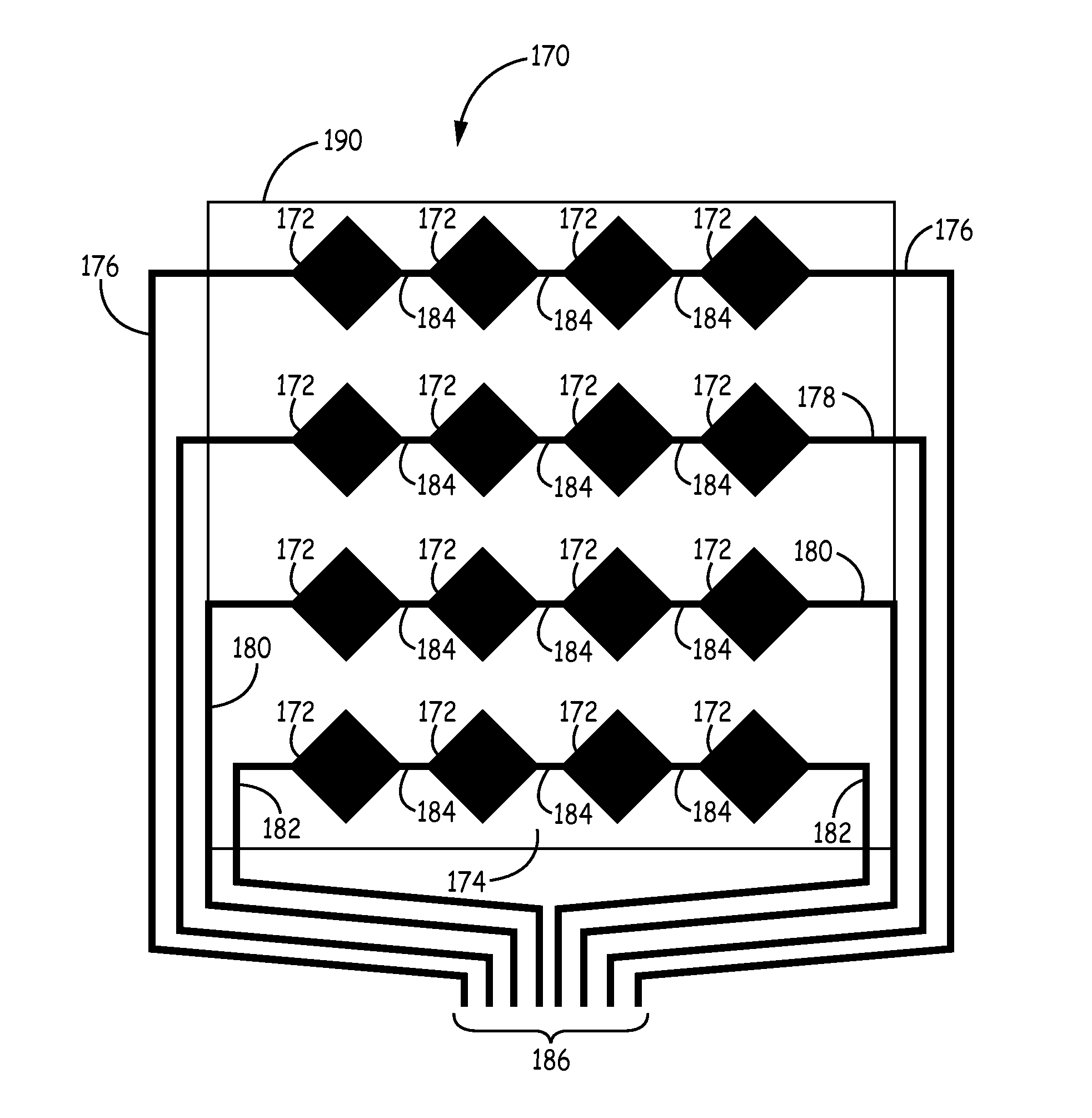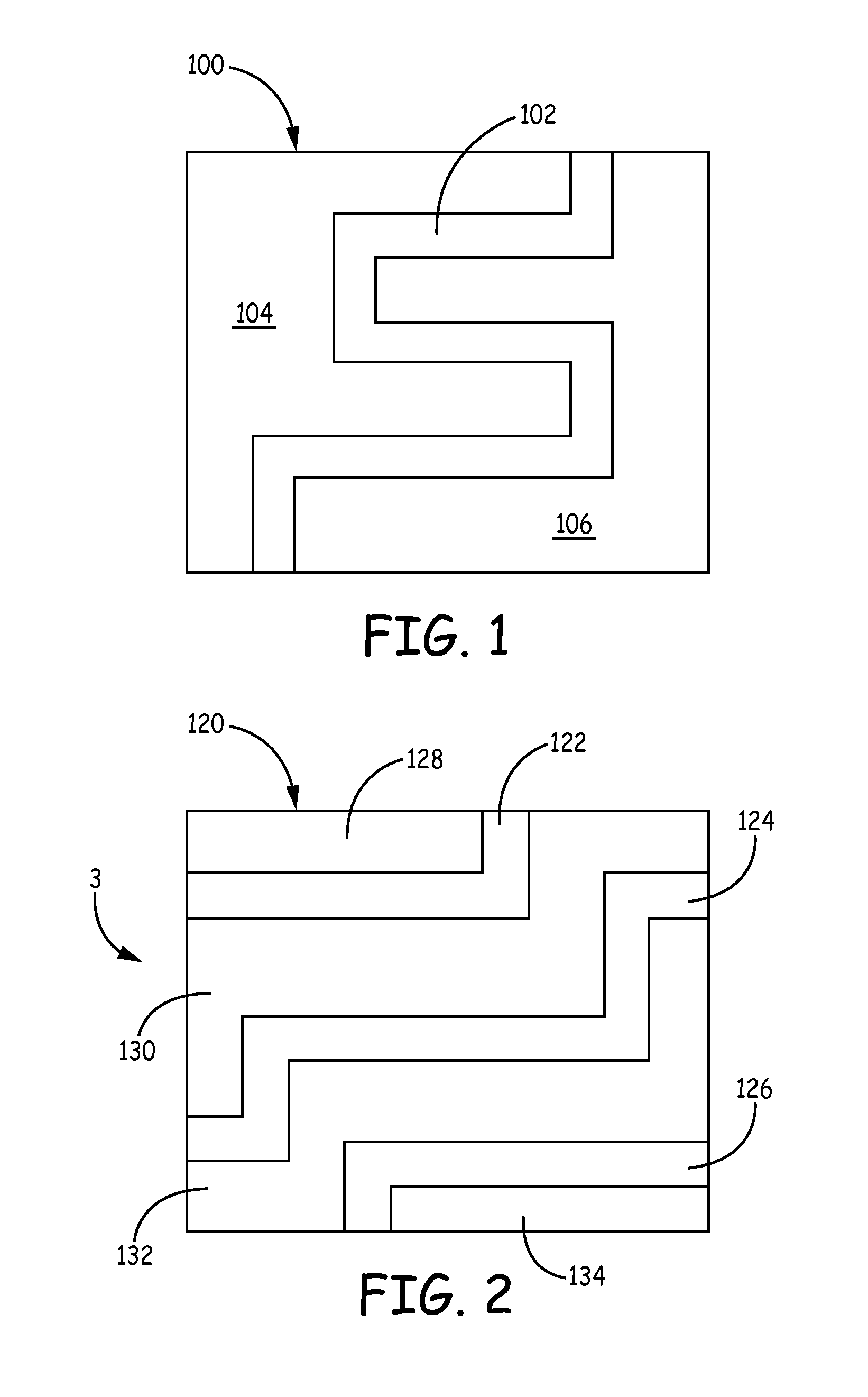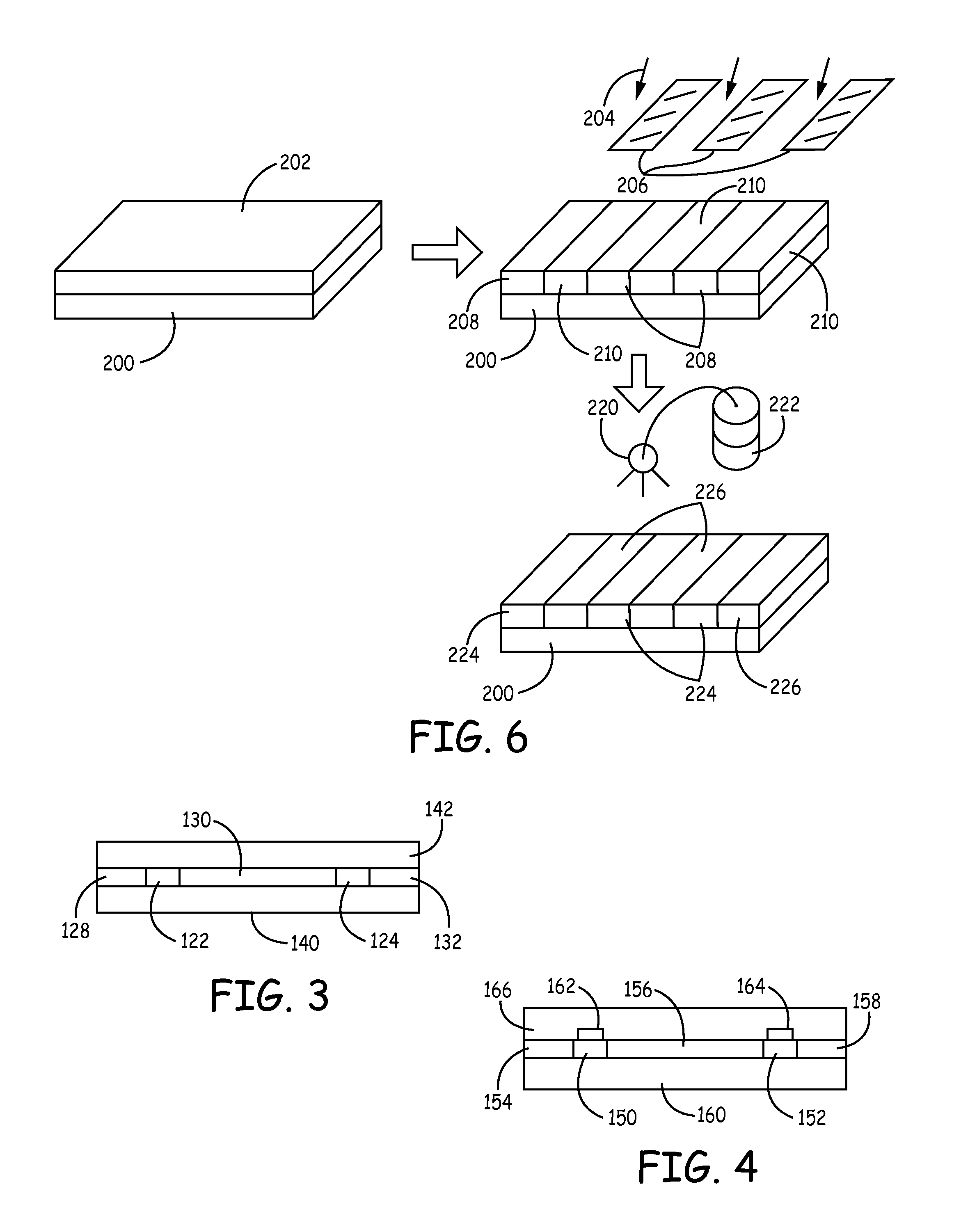Transparent conductive coatings based on metal nanowires and polymer binders, solution processing thereof, and patterning approaches
a technology of polymer binders and conductive coatings, applied in the field of transparent, electrically conductive films, can solve the problems of reducing the conductive performance of the substrate,
- Summary
- Abstract
- Description
- Claims
- Application Information
AI Technical Summary
Benefits of technology
Problems solved by technology
Method used
Image
Examples
example 1
Deionized Water as Solvent for AgNW Ink
[0095]This example tests the ability of deionized water to act as a solvent for AgNW inks.
[0096]AgNWs inks were created in deionized water. The inks contained a binder of ELVACITE® 2669 (Lucite International) in a concentration of 0.4-0.7 wt % or SANCURE® 843 (Lubrizol) in a concentration of 0.4-0.6 wt %. Wetting agents and thickeners were added to some samples each in a concentration of 0.1-0.45 wt %. The AgNW inks have roughly 0.2 wt % silver nanowires. The inks were then coated on a PET substrate using a Meyer rod or blade coating. The films were quickly dried with a heat gun or IR lamp for a few seconds to flash off solvents without significantly altering the metal nanowires.
[0097]The films were then treated with a fusing process, either HCl vapor or a fusing solution of AgNO3 or AgF in HNO3 and ethanol as described above. The properties of the films before and after the fusing agent application are compared in Table 1. Films treated with t...
example 2
Effect of Binders in Deionized Water and Organic Solvent AgNW Ink
[0098]This example tests the use of different polymer binders added to the AgNW Ink with a mixture of deionized water and organic solvents as the solvent.
[0099]AgNWs inks were created in a mixture of deionized water and ethanol, butyl cellosolve (BC), or propylene glycol monomethyl ether (PGME). The inks comprised a range of 0.3 to 1.5 weight percent of a binder of CARBOSET® 517H, CARBOSET® CR 781, CARBOSET® PC-27 (acrylic resin), from Lubrizol, HYBRIDUR®-870, HYBRIDUR®-570 (PUD), from Air Products, JONCRYL® 1915, JONCRYL® 1919, JONCRYL® 95, JONCRYL® 1987, JONCRYL® 8383 (acrylic resin) from BASF, OTTOPOL K-633, OTTOPOL S-75, OTTOPOL 522 (acrylic resin), from Gellner Industrial, LLC, QW 200, QW 93, QW18-1 (PUD), SF 18 (PUD), from Henkel, R-162, R-170 (PUD), from Resinate Materials Group, Inc., SANCURE® 815, SANCURE® 843, SANCURE® 843C, SANCURE® 878, SANCURE® 898, SANCURE® OM-933, from Lubrizol, BAYHYDROL® U XP 2239 (PUD...
example 3
Organic Solvents as an AgNW Solvent
[0101]This example tests the ability of organic solvents to act as a solvent for AgNW Ink.
[0102]AgNWs inks were created in solvent mixtures of methyl ethyl ketone (MEK), isobutanol (IBA), methyl isobutyl ketone (MIBK), tert-butyl alcohol (TBA), propylene glycol monomethyl ether (PGME), propylene glycol monomethyl ether acetate (PGMEA), n-butyl acetate (BA), ethyl acetate (EA), ethanol (EtOH), ethyl lactate (ELA), or butyl cellosolve (BC), or in a mixture of toluene / methanol / cyclopentanone (TMC). The inks contained a binder of CAB 171-15 from Eastman Chemical, ethyl cellulose (EC), polyvinylacetate (PVAc) from Sigma-Aldrich, ELVACITE® 2041, ELVACITE® 2010, ELVACITE® 2042, ELVACITE® 2045, ELVACITE® 2669 from Lucite International, NEOCRYL® XK-98 from DSM NeoResins, JONCRYL® 611, JONCRYL® 690 from BASF, MOWITOL® B60HH (poly(vinyl butyral)), from Kuraray American Inc. Some samples included a crosslinker (Crosslinker CX-100 from DSM NeoResins) in a conce...
PUM
 Login to View More
Login to View More Abstract
Description
Claims
Application Information
 Login to View More
Login to View More - R&D
- Intellectual Property
- Life Sciences
- Materials
- Tech Scout
- Unparalleled Data Quality
- Higher Quality Content
- 60% Fewer Hallucinations
Browse by: Latest US Patents, China's latest patents, Technical Efficacy Thesaurus, Application Domain, Technology Topic, Popular Technical Reports.
© 2025 PatSnap. All rights reserved.Legal|Privacy policy|Modern Slavery Act Transparency Statement|Sitemap|About US| Contact US: help@patsnap.com



